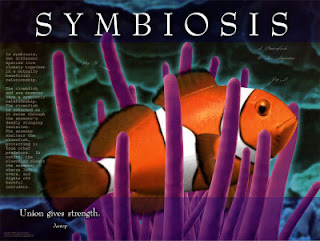In this topic you will learn about how organisms can help or hinder the survival of other organisms. Certain factors control the growth and survival of living things. Anything that controls the growth or survival of a population is called a limiting factor. Some limiting factors are nonliving. Sunlight, wind, water, and temperature are examples of nonliving limiting factors. Living organisms can also be limiting factors. For example, the number of prey in an ecosystem can determine the number of predators the ecosystem can support. Plants live almost everywhere on Earth. Plants can survive because they have developed special characteristics. Characteristics that help an organism survive in its environment are called adaptations. One of the harshest areas for plant growth is a desert. The barrel cactus is adapted to the conditions of the desert. The plant's roots are very shallow and grow only about 3 inches into the dry soil. When rain falls, the roots catch the rain and soak it up very quickly. The stem of the cactus also helps it survive. It stores water. Different kinds of organisms interact with each other in a number of different ways. There are relationships between different kinds of organisms. In nature a relationship between two kinds of organisms is called symbiosis. There are different kinds of symbiosis. Sometimes both organisms benefit from the relationship. Sometimes one organism benefits while harming the other. Sometimes only one benefits. When a relationship between two organisms benefits both of them it is called mutualism. Yucca trees and yucca moths cannot survive without each other. Each helps the other reproduce. A relationship in which one kind of organism lives on or in another organism and may harm that organism is called parasitism. The organisms that live on or in other organisms are called parasites. Fleas are parasites of dogs and cats. The fleas live off the blood of these animals and give nothing back but itching and irritation. When one organism benefits from another without harming or helping it is called commensalism. Many animals have this kind of relationship. There are certain tropical fish that live unharmed among the poisonous tentacles of sea anemones. The anemones provide safety for the fish. Yet the fish neither harm nor help the anemones.
1. Adaptation: Characteristics that help an organism to in an environment.
2. Simbiosis: In nature a relationship between two kinds of organisms.
3. Mutualism: When a relationship between two organisms benefits both of them.

Yucca tree
4. Parasitism: A relationship in which one kind of organism lives on or in another organism and may harm that organism.
5. Commensalism: When one organism benefits from another without harming or helping.







No hay comentarios:
Publicar un comentario